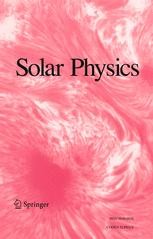Editors' Choice: "A Survey of Computational Tools in Solar Physics"
 Bobra, M.G., Mumford, S.J., Hewett, R.J. et al. A Survey of Computational Tools in Solar Physics. Sol Phys 295, 57 (2020). https://doi.org/10.1007/s11207-020-01622-2
Bobra, M.G., Mumford, S.J., Hewett, R.J. et al. A Survey of Computational Tools in Solar Physics. Sol Phys 295, 57 (2020). https://doi.org/10.1007/s11207-020-01622-2
Editor's Choice | Open Access
Published: 20 April 2020
Abstract:
The SunPy Project developed a 13-question survey to understand the software and hardware usage of the solar-physics community. Of the solar-physics community, 364 members across 35 countries responded to our survey. We found that 99±0.5% of respondents use software in their research and 66% use the Python scientific-software stack. Students are twice as likely as faculty, staff scientists, and researchers to use Python rather than Interactive Data Language (IDL). In this respect, the astrophysics and solar-physics communities differ widely: 78% of solar-physics faculty, staff scientists, and researchers in our sample uses IDL, compared with 44% of astrophysics faculty and scientists sampled by Momcheva and Tollerud (2015). 63±4% of respondents have not taken any computer-science courses at an undergraduate or graduate level. We also found that most respondents use consumer hardware to run software for solar-physics research. Although 82% of respondents work with data from space-based or ground-based missions, some of which (e.g. the Solar Dynamics Observatory and Daniel K. Inouye Solar Telescope) produce terabytes of data a day, 14% use a regional or national cluster, 5% use a commercial cloud provider, and 29% use exclusively a laptop or desktop. Finally, we found that 73±4% of respondents cite scientific software in their research, although only 42±3% do so routinely.
Solar Physics Editor's Choice:
In each volume of Solar Physics, a few papers are marked as “Editors’ Choice”. The primary criteria is original, high quality research that is of wide interest within the community.
